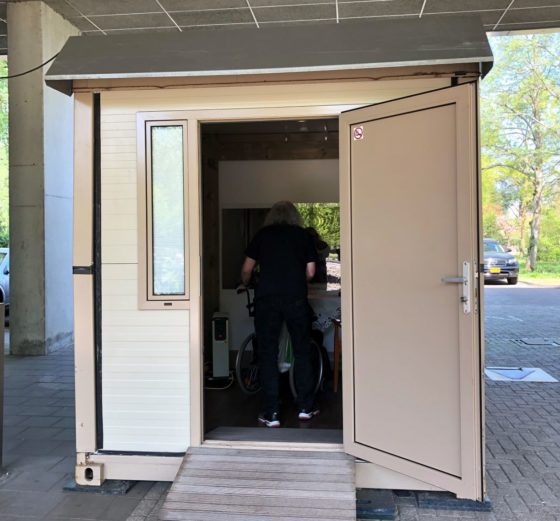Multiple causes for high coronavirus infection rate in nursing homes: NRC


Lack of awareness, a restrictive and bureaucratic testing policy, and being ‘last in queue’ for personal protective equipment are among the likely reasons for the devastation wreaked by coronavirus in Dutch nursing and residential homes, the NRC has said in an analysis.
By May 26, some 9,705 elderly residents had caught the virus, mostly in the provinces of Limburg, Brabant, Zuid-Holland, Gelderland and the cities of Amsterdam and Utrecht. Of the 50,000 elderly in care or nursing homes in these areas, one in five caught the infection and a third died as a result.
The attitude taken by the directors of the homes may a contributing factor, the paper said. In many cases no information about the occurrence of infections or coronavirus-related deaths were communicated to the outside world, distorting the true number.
For instance, when the RIVM registered 20 coronavirus deaths among nursing home residents in Nunspeet, mayor Breunis van de Weerd took the step of accessing the local death register, which is officially out of bounds to him, and counted 80. The case is illustrative of many others, the paper said.
An initial lack of awareness at the homes of the seriousness of what was happening also played a part. In the nursing homes in Limburg, for instance, carnaval celebrations were taking place until February 24.
‘No one understood the dangers, professor of geriatric care Jan Hamers told the paper, ‘it’s tradition to celebrate carnaval there and staff too celebrated in bars and went back to work the next day.’
Infection by a member of staff may also have been at the bottom of what is now known to be the biggest outbreak in the north of the country.
At the Saxenoord residential home in Franeker, 27 out of 87 residents and 31 staff members turned out to be infected. Five residents who tested positive died as well as another four people with suspected coronavirus. Again the officials in charge of the home did not make this public at the time.
However, testing among staff was initially only allowed in cases of clear symptoms and, according to one care home director, ‘a bureaucratic nightmare of form filling’.
Back of the queue
Care homes were also at ‘the back of the queue’ when it came to protective material like surgical grade face masks, the paper said, even after doctors had raised the alarm.
While government advisors have admitted that a lack of initial testing among staff and vulnerable elderly residents, the lack of PPE and the late awareness of asymptomatic spread by staff were the likely cause of the quick spread of the infection, chairman Jaap van Dissel later denied that restrictive testing and lack of face masks played a role.
‘The Netherlands has been too complacent,’ geriatric doctor Ralf Vingerhoets told the paper. ‘We hoped in February that we could find individual cases in Brabant and isolate them but it was too late. When the next epidemic comes we must isolate people from risk areas immediately.’
Thank you for donating to DutchNews.nl.
We could not provide the Dutch News service, and keep it free of charge, without the generous support of our readers. Your donations allow us to report on issues you tell us matter, and provide you with a summary of the most important Dutch news each day.
Make a donation